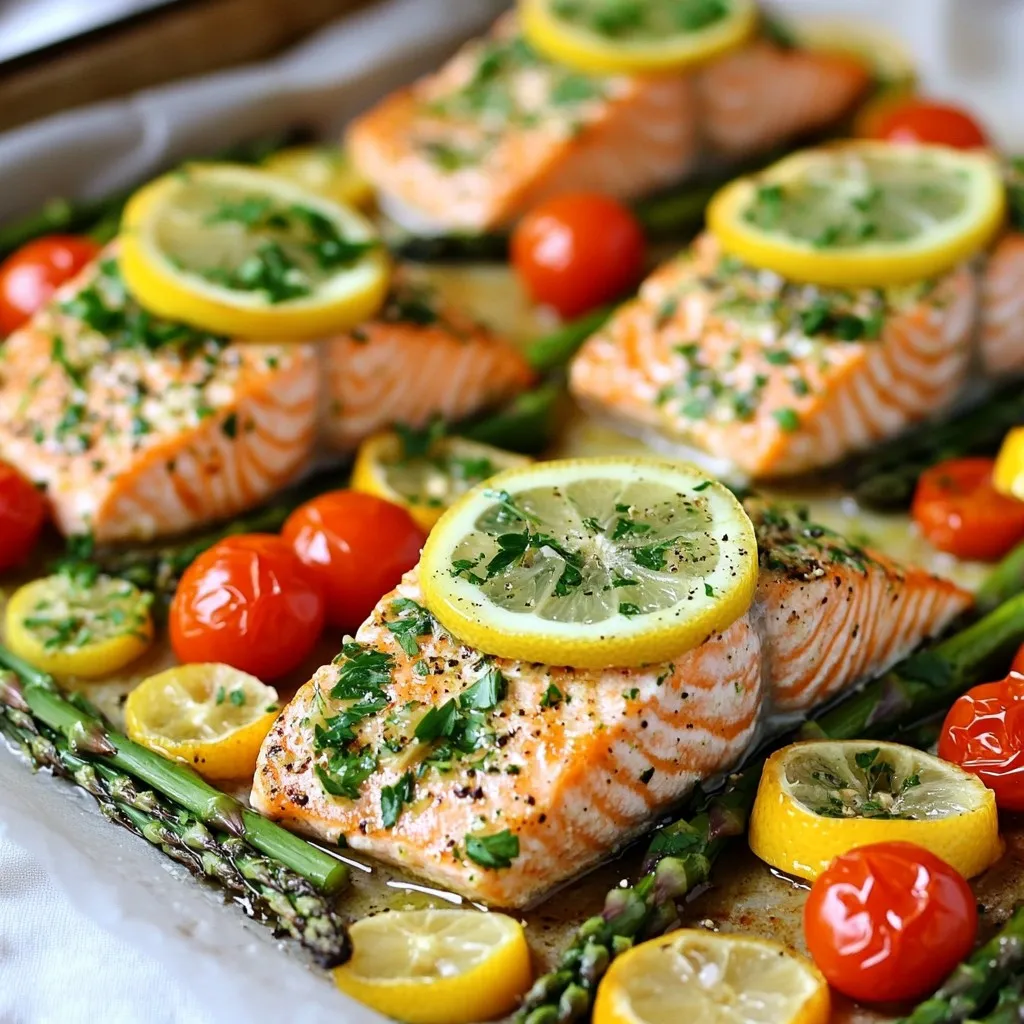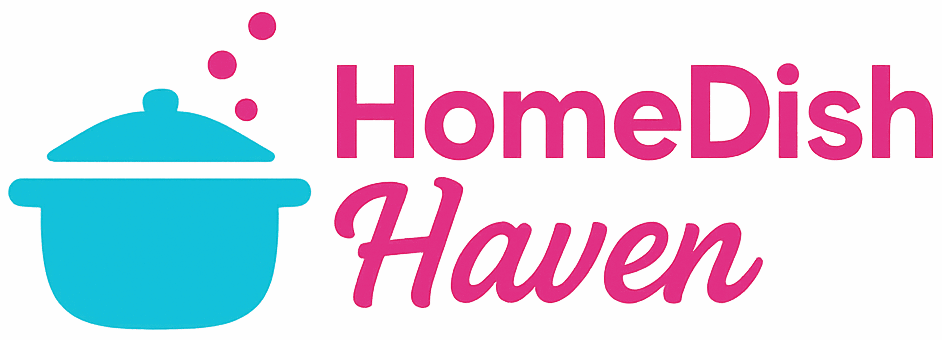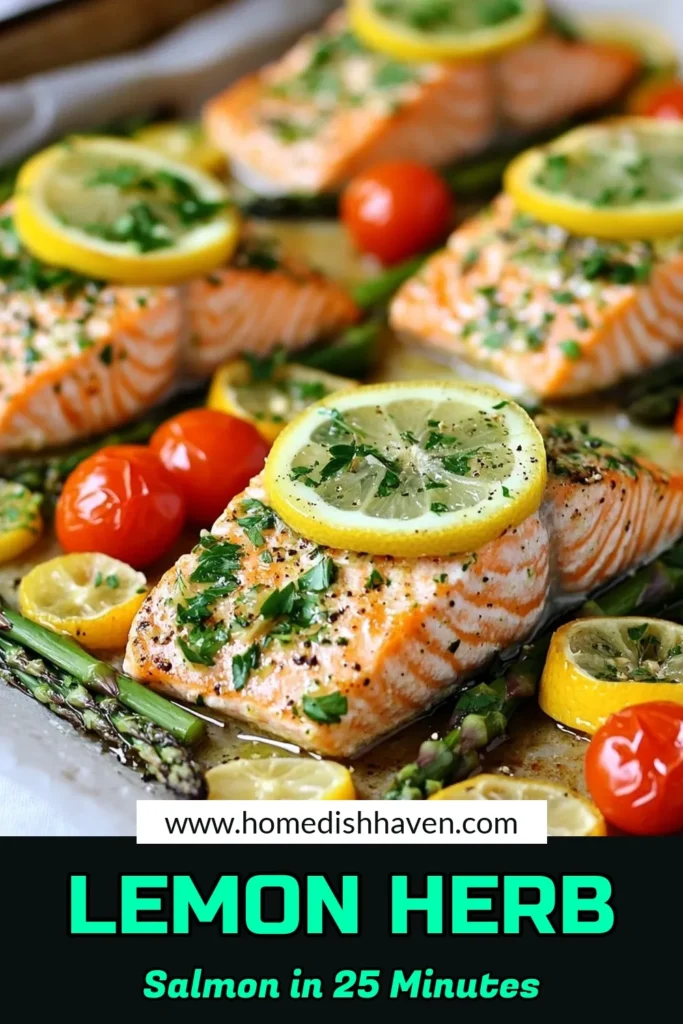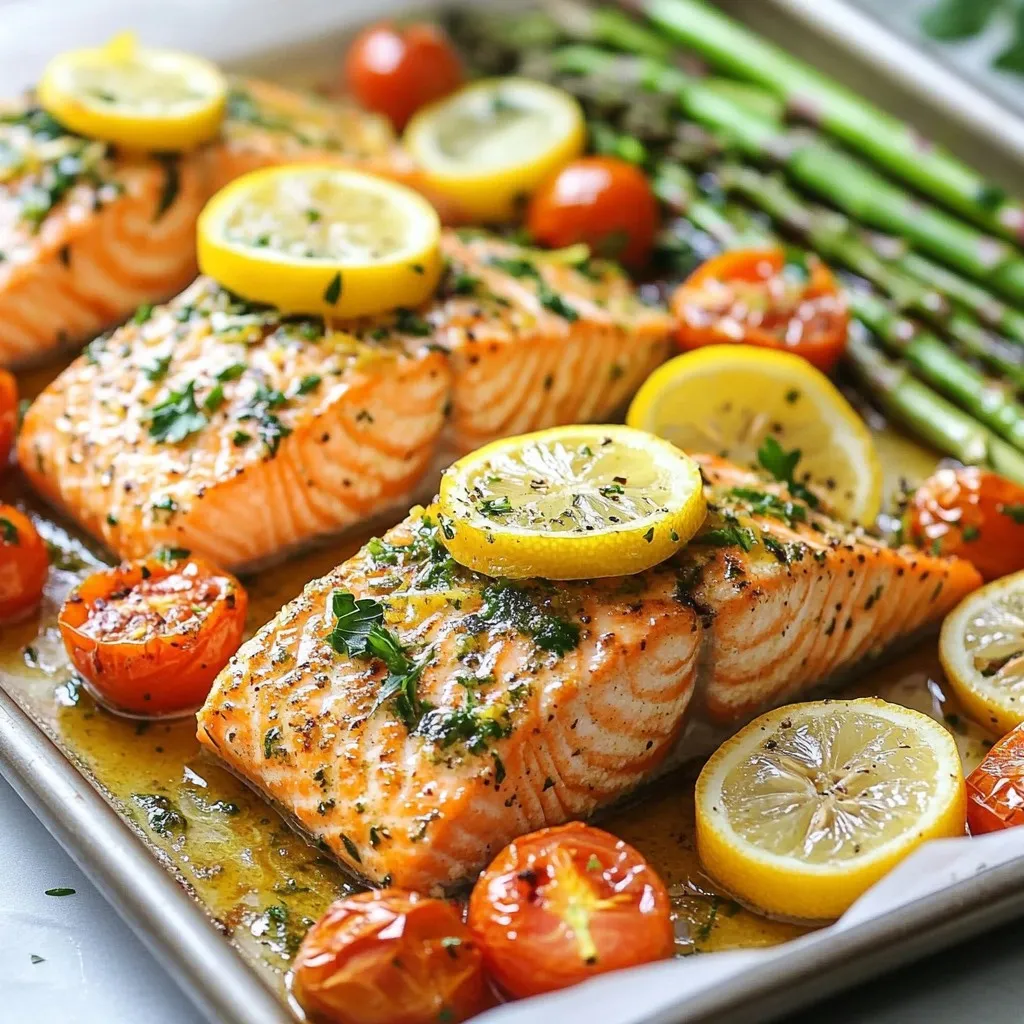WANT TO SAVE THIS RECIPE?
Are you looking for a simple yet tasty meal? Sheet Pan Lemon Herb Salmon is your answer! This dish combines fresh salmon, vibrant veggies, and zesty lemon all in one easy-to-make recipe. Not only is it packed with flavor, but it also allows you to enjoy a healthy dinner without the fuss. Dive in to learn how to whip up this delightful meal that will impress everyone at your table!

Why I Love This Recipe
- Fresh Ingredients: This recipe showcases fresh salmon, vibrant vegetables, and zesty lemons, making every bite a burst of flavor.
- Quick and Easy: With just 10 minutes of prep time, you can have a healthy meal ready in 25 minutes, perfect for busy weeknights.
- One-Pan Wonder: Cooking everything on a single sheet pan means less cleanup and more time to enjoy your meal with loved ones.
- Customizable: Feel free to swap out the vegetables or herbs based on your preferences, making this dish adaptable to your taste!
Ingredients
Main Ingredients
– 4 fresh salmon fillets
– 2 tablespoons extra virgin olive oil
– 2 lemons (one sliced into rounds, and the other juiced)
Fresh salmon fillets are the star of this dish. They give you a rich taste and firm texture. Extra virgin olive oil adds a nice depth of flavor. It also helps the seasoning stick. Lemons brighten the dish and make it zingy. You need one lemon for juice and slices from the other.
Seasonings and Aromatics
– 3 cloves garlic, finely minced
– 1 teaspoon dried oregano
– 1 teaspoon dried thyme
– Sea salt and freshly cracked black pepper, to taste
Garlic brings a warm, savory aroma. It pairs perfectly with salmon. Dried oregano and thyme add a herby taste that lifts the dish. Sea salt and black pepper enhance all the flavors. They help balance the zesty lemon and rich salmon.
Vegetables
– 1 cup cherry tomatoes, halved
– 1 cup asparagus spears, trimmed
– Fresh parsley, finely chopped, for garnish
Cherry tomatoes add sweetness and color. Their juices mix with the salmon for a tasty sauce. Asparagus gives a nice crunch and green freshness. Fresh parsley is the final touch. It adds a pop of color and a fresh taste when you sprinkle it on top.

Step-by-Step Instructions
Preheat the Oven
Start by preheating your oven to 400°F (200°C). This high heat helps cook the salmon quickly and evenly. To make cleanup easy, line a baking sheet with parchment paper. This way, your salmon and veggies won’t stick.
Making the Lemon Herb Mixture
In a small bowl, mix together two tablespoons of extra virgin olive oil, the juice of one lemon, and three minced garlic cloves. Add one teaspoon each of dried oregano and thyme. Don’t forget to sprinkle in sea salt and black pepper! Whisk everything until it blends well. This mixture gives the salmon a fresh and zesty flavor.
Preparing the Salmon
Place four salmon fillets skin-side down on the baking sheet. Using a brush or spoon, coat the tops of each fillet with your lemon herb mix. Make sure every bit of salmon gets the tasty sauce. Next, take the sliced lemon rounds and arrange them on top of the fillets. The lemon slices will add a lovely aroma as they bake.
In another section of the baking sheet, add one cup of halved cherry tomatoes and one cup of trimmed asparagus spears. Drizzle them with a little olive oil and season them with salt and pepper. This adds color and nutrients to your meal.
Baking Instructions
Now, slide the baking sheet into your preheated oven. Bake for about 12 to 15 minutes. You’ll know your salmon is done when it flakes easily with a fork, and the veggies are tender. Keep an eye on it to avoid overcooking. If you check it, you’ll be sure to serve a perfect dish!
Tips & Tricks
Ensuring Flaky Salmon
Cooking salmon right is key to great texture. You want to cook it at 400°F for 12-15 minutes. This high heat helps keep the fish moist and flaky. Check it with a fork; if it flakes easily, it’s ready. Don’t overcook it, or it can dry out fast.
Enhancing Flavor
Fresh herbs really boost flavor. They add bright notes to your dish. Use fresh parsley, thyme, or oregano for the best taste. Dried herbs work too, but fresh is better. You can also try marinades. A simple mix of olive oil, lemon, and garlic adds great depth. Experiment with spices like paprika or cumin for a fun twist.
Presentation Tips
How you serve your dish matters. For a rustic look, keep the salmon and veggies on the baking sheet. This makes it easy and casual. For a plated option, arrange the food nicely. Add extra lemon slices on the side for color. A sprinkle of fresh parsley on top makes it pop. Enjoy your meal and impress your guests!
Pro Tips
- Fresh Ingredients Matter: Always opt for fresh salmon and seasonal vegetables to enhance the flavor of your dish.
- Don’t Overcook: Keep an eye on your salmon; it should be cooked just until it flakes easily with a fork for the best texture.
- Lemon Zest Boost: For an extra zing, add some fresh lemon zest to the herb mixture before brushing it on the salmon.
- Meal Prep Friendly: This dish is perfect for meal prep—simply store leftovers in an airtight container for up to three days.

Variations
Alternative Proteins
If you want a change from salmon, you can try other fish or seafood. Cod is a great option. It has a mild flavor and cooks well on a sheet pan. Tilapia also works nicely, as it is flaky and absorbs flavors well. For seafood lovers, shrimp can add a fun twist. Just remember to adjust the cooking time since shrimp cooks faster than fish fillets.
Seasonal Vegetable Swaps
You can mix up the veggies based on what is fresh or in season. Instead of asparagus, try broccoli or green beans. Both add great crunch and flavor. You can also use zucchini or bell peppers for a colorful touch. Just cut them into similar sizes for even cooking. Carrots are another good option; they add sweetness and pair well with lemon.
Flavor Modifications
Change the flavor by using different herbs or spices. Instead of oregano, try basil or dill for a fresh taste. You can add a pinch of red pepper flakes if you like heat. For a sweeter note, mix in some honey or maple syrup with the lemon juice. This adds a nice glaze to the salmon and veggies. Don’t be afraid to experiment and find your favorite flavor combinations!
Storage Info
Storing Leftovers
To keep your salmon fresh, store leftovers in an airtight container. Place the salmon and veggies together, if possible. Refrigerate them within two hours of cooking. This helps prevent bacteria growth. Enjoy the leftovers within three days for the best taste and safety.
Reheating Tips
When reheating salmon, keep it moist. Preheat your oven to 350°F (175°C). Place the salmon on a baking dish and cover it with foil. This helps trap moisture, so it doesn’t dry out. Heat for about 10 minutes or until warmed through. You can also use a microwave. Just cover the salmon with a damp paper towel to keep it moist.
Freezing Guidelines
Freezing the dish is easy. Wrap the salmon and veggies tightly in plastic wrap or aluminum foil. Then place them in a freezer-safe bag. Make sure to remove as much air as possible. Label the bag with the date. You can freeze the dish for up to three months. When ready to eat, thaw in the fridge overnight. Then reheat using the tips above for the best results.
FAQs
How do I know when the salmon is fully cooked?
You can tell salmon is done when it flakes easily with a fork. The flesh should change from a bright pink to a more opaque color. A good rule is to cook it for about 12 to 15 minutes at 400°F. If you have a meat thermometer, the internal temperature should reach 145°F. Let it rest for a minute before you serve it. This gives the juices time to settle.
Can I use frozen salmon fillets?
Yes, you can use frozen salmon fillets. However, it is best to thaw them first. Place the fillets in the fridge overnight for safe thawing. If you need to cook them right away, you can also run them under cold water for about 30 minutes. Once thawed, pat them dry before you coat them with the lemon herb mixture. This helps the flavors stick better.
What side dishes pair well with sheet pan salmon?
Sheet pan salmon goes well with many sides. Here are a few ideas:
– Roasted vegetables: You can add bell peppers, zucchini, or Brussels sprouts.
– Salads: A simple green salad with lemon vinaigrette works well.
– Grains: Serve with quinoa, rice, or couscous for a filling meal.
– Potatoes: Mashed or roasted potatoes are tasty too.
Mix and match to find your favorite combinations!
This blog post covered how to create a delicious sheet pan salmon meal. We discussed key ingredients like fresh salmon, olive oil, and vibrant veggies. You learned the step-by-step process, along with useful tips for flavor and presentation. I shared variations for alternative proteins and vegetables to keep it fresh. Finally, we highlighted best practices for storage and reheating.
Embrace these ideas to make cooking easier and enjoyable. You’ll impress anyone at your table with this tasty dish. Happy cookin
Zesty Sheet Pan Lemon Herb Salmon
A flavorful and easy-to-make salmon dish baked with fresh herbs and vegetables.
Prep Time 10 minutes mins
Cook Time 15 minutes mins
Total Time 25 minutes mins
Course Main Course
Cuisine American
Servings 4
Calories 350 kcal
- 4 fillets fresh salmon
- 2 tablespoons extra virgin olive oil
- 2 whole lemons (one sliced into rounds, and the other juiced)
- 3 cloves garlic, finely minced
- 1 teaspoon dried oregano
- 1 teaspoon dried thyme
- to taste sea salt and freshly cracked black pepper
- 1 cup cherry tomatoes, halved
- 1 cup asparagus spears, trimmed
- for garnish fresh parsley, finely chopped
Preheat your oven to 400°F (200°C) and line a baking sheet with parchment paper.
In a small mixing bowl, combine the extra virgin olive oil, freshly squeezed lemon juice, minced garlic, dried oregano, dried thyme, and a generous pinch of sea salt and freshly cracked pepper. Whisk until well blended.
Place the salmon fillets on the prepared baking sheet with the skin facing down. Coat the tops of each fillet with the lemon herb mixture.
Arrange the sliced lemons on top of each salmon fillet.
In a separate section of the baking sheet, place the halved cherry tomatoes and trimmed asparagus. Drizzle with olive oil and season with salt and pepper.
Bake for approximately 12-15 minutes until the salmon flakes easily with a fork and the vegetables are tender.
Allow the dish to rest for about a minute before serving. Sprinkle freshly chopped parsley on top.
Serve the salmon and vegetables directly on the baking sheet for a rustic presentation.
Keyword easy, herb, lemon, salmon, sheet pan
WANT TO SAVE THIS RECIPE?





